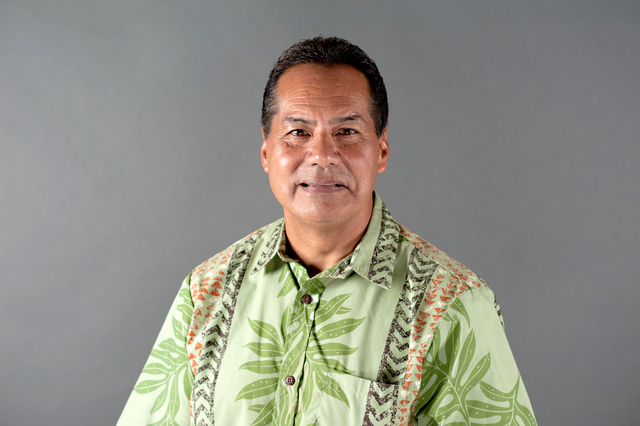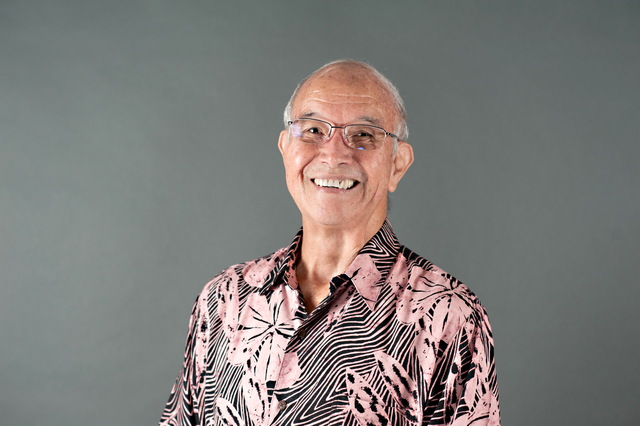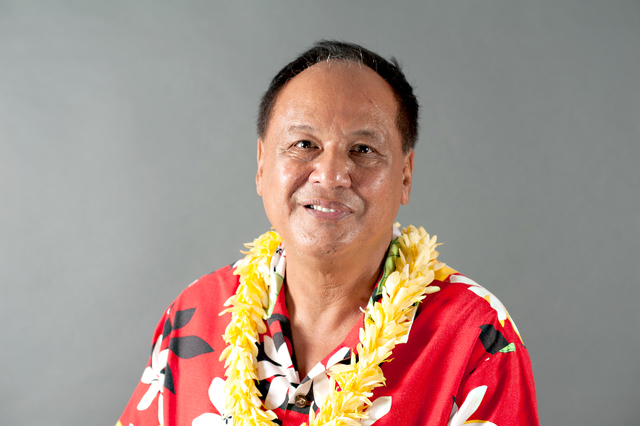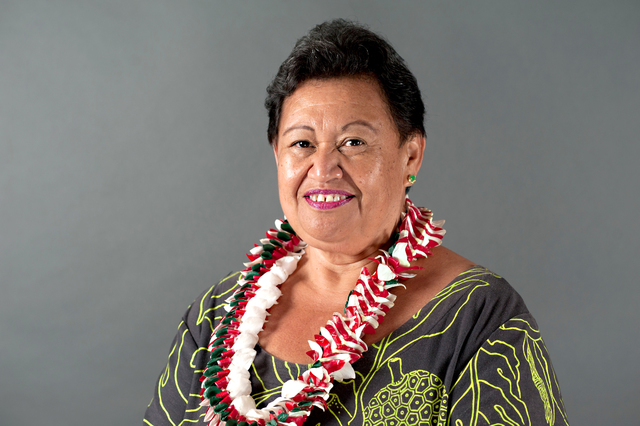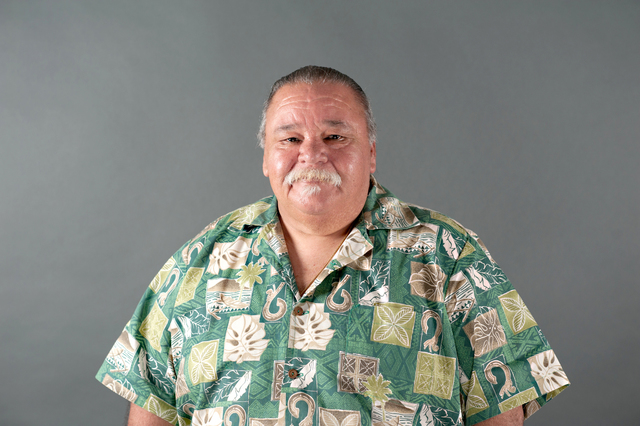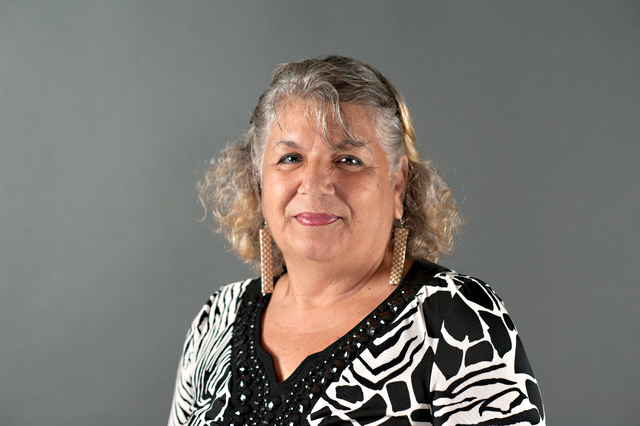A clean slate; New panel of judges will decide this year’s winners
The Merrie Monarch Festival is Hawaii’s ultimate celebration of traditional culture, but changes sometimes do occur.
ADVERTISING
Most of those changes are subtle, but this year one can be likened to a seismic shift — the appointment of an entirely new panel of seven judges.
“It was just time,” said Merrie Monarch Festival President Luana Kawelu. “Some of them served a long time, and I really appreciate their service. They’ve played a big role for us, and so will the new judges.”
The new judges, like the previous panel, are all hula and Hawaiian cultural experts. Only one, kumu hula Ed Collier, has previous Merrie Monarch judging experience.
In addition to Collier, the new judges are: Keith Awai, Ainsley Halemanu, Lahela Ka‘aihue, Etua Lopes, Pi‘ilani Lua and Holoua Stender.
“It’s an honor. It’s nice because I get to see all of my peers,” said Lopes, kumu hula of Kona’s Halau Hula Na Pua U‘i ‘O Hawai‘i and a student of the late kumu hula George Na‘ope, co-founder of the Merrie Monarch Festival. “I just want to show my teacher’s teachings in the right way.”
Lopes said he loves hula’s tradition. He added it’s important to him that he be able to see the dancers’ steps from his stage-side vantage point.
“Sometimes, it’s hard to see the steps,” he said. “To me, the feet are very important, the foot movement. The steps are what the hula really is. The (hand) motion is just the frosting on the cake. The foot movements are the foundation. We have nine basic steps. But, you know, some people dance on the balls of their feet and some people dance flat-footed. And that’s all good.”
Lua, a cultural specialist at Kahanu Garden in Hana, Maui, and kumu hula who studied under her mother, Elizabeth Ku‘ualoha Terry, and Dr. Charles Kenn, said her selection as a Merrie Monarch judge “feels like a lifetime achievement award” and “is an extremely huge honor.”
Lua said her criteria for judging remain the same for hula kahiko (ancient hula) and hula ‘auana (modern hula).
“Hula has certain characteristics that need to be present so that it is recognizable as the hula,” she said. “Everything pertinent to the hula is judged: ka‘i (entrance), interpretation, expression, posture, hand gestures, foot movement, body movement, ho‘i (exit), authenticity of costume, adornments, grooming, overall performance, and for the kahiko, the ‘oli (chant).”
Asked about challenges, Lopes replied, “The real challenge is sitting there for that long. You’re right there, front and center. And you don’t really get a break.”
During the time between halau and at intermission, judges often are seen writing notes on their judging sheets to give to kumu. Even before the competition, judges have gone over notes provided by kumu about their presentation, including the chants and songs and the stories they tell, choreography, costumes, adornments and other details.
“There’s a lot of reading and writing special notes. So before (halau) come out, I can read their (kumu’s) special notes that tell their mana‘o (ideas, thoughts and beliefs),” Lopes said. “All of us come from our own lineage of hula. We all come from different masters. We don’t set a guideline that we all have to do this the same way. The kumu can send you the fact sheets and we need to read them beforehand.
“Some of the dances are really familiar to me because I’ve (choreographed) those dances in my time. And now, I get to see them through the eyes of a younger kumu.”
Lopes said Collier reinforced to the new members of the panel how important fact sheets are to judges and the kumu and their halau.
“He said to read the fact sheets,” Lopes said. “Because there were some (kumu) who couldn’t understand why they were scored as they were because of their fact sheets. And so, he said read their fact sheets really good. You’ve just got to study a lot. And let me tell you, we’ve got to study.”
Lopes and Lua said it’s important for judges to use their backgrounds as a foundation in judging but to not become bound only by the standards of their own halau.
“A‘ohe pau ka ‘ike i ka halau ho‘okahi. Not all knowledge lie in one school,” Lopes said.
“There is a Hawaiian saying that says that all knowledge is not contained within one halau, and we kumu hula, we live and teach by that,” echoed Lua. “We count on everyone not looking exactly alike, for it is this expression of the hula through our kumu, our ‘aina, our traditions, and our own creative license we apply when appropriate, that keeps the hula hula, and keeps it evolving, alive and well.”
While they might have some differences, kumu hula are a tight-knit group — and judges are included in that group. Most would prefer, if needed, to air their differences in private.
One kumu, though, Johnny Lum Ho of Hilo’s Halau O Ka Ua Kani Lehua, said he welcomes the new panel.
“I’m very happy they have new judges,” said Lum Ho, who noted comments from judges are important to kumu, especially when the scores awarded are less than stellar. “There were three judges who never wrote anything in my comments section. It’s like a slap in the face.”
Lopes agreed that it’s vital to give feedback on the comments section of the score sheet.
“We’ve studied our score sheets to make our presentation better,” he said. “Say, if I entered last year, what was my lowest score, and what do I do to make that score better? As kumu, we really depend on those comments.”
Email John Burnett at jburnett@hawaiitribune-herald.com.


